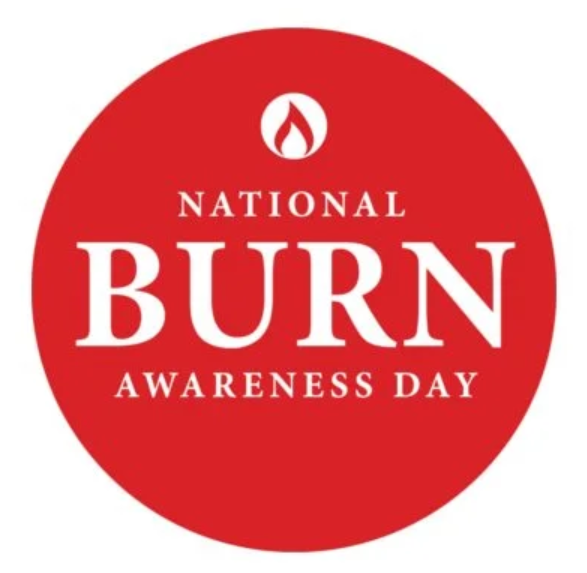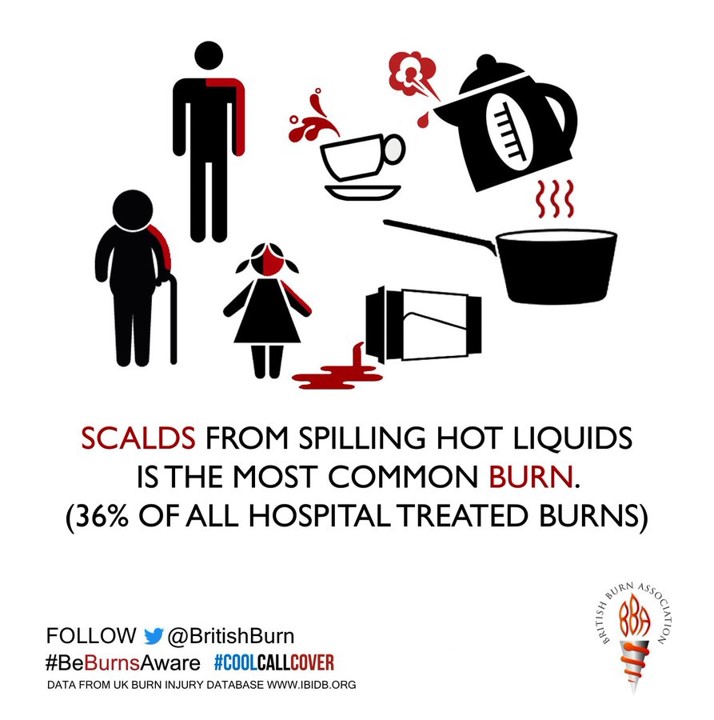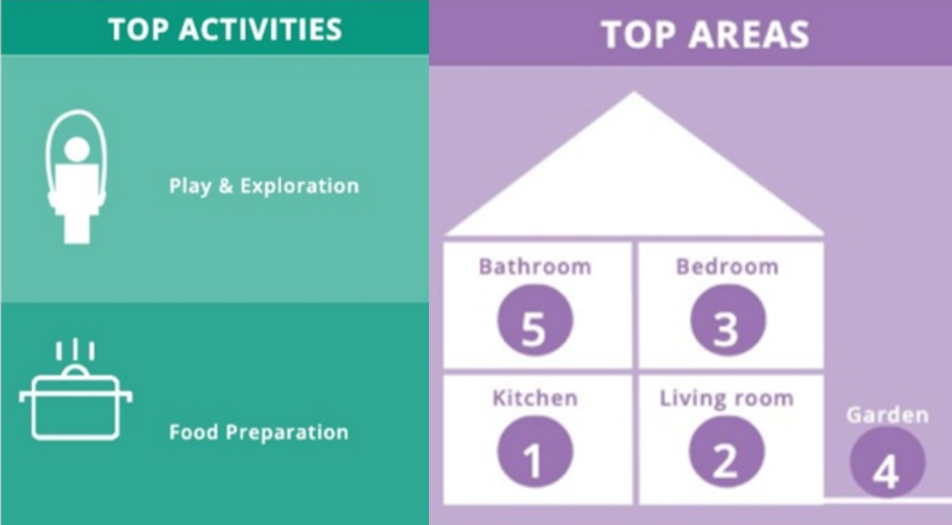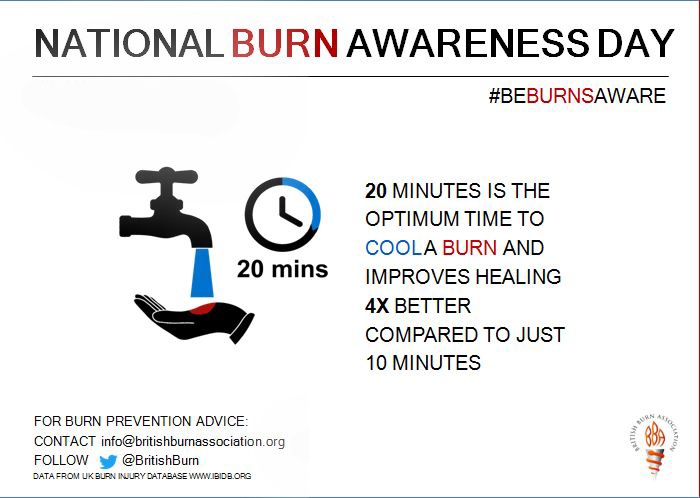Today 11th October is National Burn Awareness Day 2023, and I’m supporting the effort for all of us to #BeBurnsAware.

I have become more bullish on Burn Awareness as I’ve come to learn more about the impact burns have on public, family, and children’s health globally. My teacher for better understanding burns and public health has been Krissie Stiles, a long-time burns nurse specialist and Ambassador to the Children’s Burns Trust in the UK.
Meet Krissie.
Burns are a global public health challenge, which I detailed here in Health Populi earlier this year. Today on National Burns Awareness Day (NBAD), I want to share further details with you, informed by the wisdom of Krissie’s experience and empathy.
I first asked my burn mentor, why the need to call out a National Burn Awareness Day?

“The simple answer is – because burn injuries still happen, every day, to the people we love and care for the most. Burns happen in our safest places – in our homes, through interaction with our most familiar and most frequently used household items,” she explained. Even though NBAD has been on the calendar for ten years, burn injury incidence is up across all demographics.
“A burn injury is for life. The scars are physical as well as psychological, and can present life-long challenges for the individual and their families,” Krissie said, so her mission continues.
Who is the target audience for the #BeBurnsAware message, I wondered.
Given the prevalence of burns among children, Krissie focuses on parents, carers and grandparents to young children, as well as people involved in healthcare, education, social support and care of children.
“One-half of all the children admitted to the UK specialist burn services with a burn or a scald are under 5 years old. And, a third of all the children admitted are infants and toddlers under the age of 2,” Krissie emphasized.

“Burns and scalds are most prevalent in young children under 5 years old than in any other age group. This is an age group that is becoming newly mobile, exploring the world around them through play and touch, but who haven’t yet learned about the things in the home that may be unsafe or could hurt them. Grown-ups must be the home burn safety champions for the unaware youngsters, especially around hot liquids, hot surfaces, household (chemical) substances and electric ports and devices,” which any parent has seen for themselves — in kitchens, bathrooms, and other places int he home where water can be accessed and used.
We then discussed why burns persist in still being a major burden of illness in 2023.
One underlying reality is that, Krissie noted, “Increased burn injury incidence is linked with lower household income, low parental socioeconomic status, living in deprived areas, living in rented accommodation, young mothers, single parent families, children from multi child families, low level of parental education, children from ethnic minorities, immigrant background, and poor living conditions.”
Thus, those all-impactful social determinants of health are key drivers of burns especially in children. In England and Wales, Krissie called out, children living in areas of social deprivation are over six times more likely to be burned or scalded than kids living elsewhere.
So what can we all do to bolster the messages of NBAD?
Krissie recommends we download a National Burn Awareness Toolkit from the British Burn Association and Children’s Burns Trust, which provides useful, actionable information on burn prevention within the home and the importance of knowing what to do if a burn happens to you or those you love, she shared.

One of the most important lessons I learned from Krissie when first meeting her is the “20-minute cool down” tip, shown here from the Toolkit.
“Most of us don’t know what to do when a burn injury happens. Learn about appropriate burns first aid and share the importance of treating burns with at least 20 minutes of cool (not cold) running water and the fact that this intervention is only effective within 3 hours of burn injury. And once you know – share it with those you love and care for the most,” she asks us.
To act on our burns awareness for prevention, Krissie recommends that we, “Be the change you want to see. I would love for the business and technology companies, especially those involved in the hot beverage industry, to adopt ‘burn aware’ marketing, retail and customer service strategies – showcasing safe practices in enjoyment of hot drinks around young children. Companies could fully embrace the importance of burn prevention through mindful advertising, protective of their customers’ experience beyond the transaction and bold enough to support avoidance of harm from hot drinks,” for example.
At the end of the day, burn prevention is not a healthcare dilemma – it is a social challenge, Krissie has learned.
“That social challenge with burn prevention is not to keep it to ourselves, but to sprinkle it with love and kindness, so that no family ever needs to know the consequences of living with the aftermath of burns and scalds.
“In the words of the lovely Jane Goodall: “What you do makes a difference, and you have to decide what kind of difference you want to make.”
Follow #NBAD2023 and #BeBurnsAware on social media sites for the latest guidance from burn specialists on burn prevention and first aid.




 Interviewed live on BNN Bloomberg (Canada) on the market for GLP-1 drugs for weight loss and their impact on both the health care system and consumer goods and services -- notably, food, nutrition, retail health, gyms, and other sectors.
Interviewed live on BNN Bloomberg (Canada) on the market for GLP-1 drugs for weight loss and their impact on both the health care system and consumer goods and services -- notably, food, nutrition, retail health, gyms, and other sectors. Thank you, Feedspot, for
Thank you, Feedspot, for  As you may know, I have been splitting work- and living-time between the U.S. and the E.U., most recently living in and working from Brussels. In the month of September 2024, I'll be splitting time between London and other parts of the U.K., and Italy where I'll be working with clients on consumer health, self-care and home care focused on food-as-medicine, digital health, business and scenario planning for the future...
As you may know, I have been splitting work- and living-time between the U.S. and the E.U., most recently living in and working from Brussels. In the month of September 2024, I'll be splitting time between London and other parts of the U.K., and Italy where I'll be working with clients on consumer health, self-care and home care focused on food-as-medicine, digital health, business and scenario planning for the future...